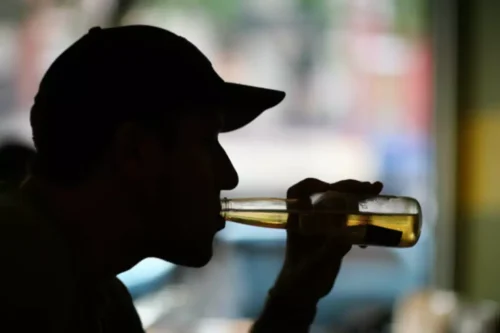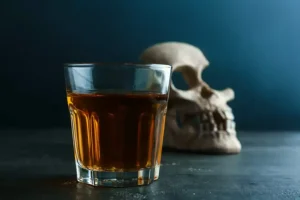What Is Alcoholic Nose Rhinophyma? Red Drinker’s Nose

As the alcohol red nose condition is assumed to be an effect of drinking excessively, it comes with a lot of negative stigmas. This is why someone with an alcoholic nose is usually shunned for it in society. The fear of judgment makes it difficult for people suffering from the condition to step forward and seek proper help and treatment.

Excessive Alcohol Consumption
The Asian population has been found to be deficient in an enzyme known as alcohol dehydrogenase. This enzyme is responsible for helping break down alcohol and metabolize it. When someone drinks alcohol, it enters the cells of their blood vessels, and the blood vessels dilate. If there is insufficient alcohol dehydrogenase enzyme in the body, the consumer is likely to become flushed. If the condition is left unmanaged and worsens, there are chances that the redness will spread across the cheeks and sometimes even start turning purple.

Conditions

Topical medications such as antibiotics, azelaic acid, and retinoids are all first-line treatment options for redness caused by excessive alcohol consumption. What is commonly called “alcoholic nose” is actually a skin condition called rhinophyma (Greek for “nose growth”). Rhinophyma is in a category of skin conditions known as rosacea, which causes chronic inflammation of the skin. This chronic inflammation is caused by broken blood vessels and sores on or around the nose, causing it to appear red, swollen, and bumpy. Despite its colloquial name, rhinophyma is not directly caused by alcohol consumption.
Alcoholic Nose

The visual side effects are most obvious on the tip and lower part of the nose, since the actual bone structure is not affected by the condition. Not everyone with rosacea who develops thickened skin will go on to develop rhinophyma. But for people who do, having chronic infections is common, since fluids in the skin ultimately trap bacteria.
Alcoholic Nose: Symptoms, Causes, and Treatment
Doctors also frequently tell alcoholics with rosacea to increase their daily water intake to help with facial redness. The more water you drink, the less likely you are to become dehydrated, which significantly decreases the chances of your face becoming red. Research shows that drinking more water also helps get rid of puffy eyes and dry skin. Even though alcohol may exacerbate facial redness and rosacea, it is not the cause. Still, eliminating alcohol consumption is key to avoiding rosacea flare-ups. Excess alcohol consumption can also cause psoriasis, a condition that results in flaky and itchy skin.
- In surgery, the nose can be reshaped and certain layers of excess skin can be removed that obstruct airways.
- Indeed, there were “hundreds” studies in the 1990s that linked alcohol to good health, including a lower risk of cardiovascular disease, the New York Times reported.
- Alcohol alternatives like Surely non-alcoholic wine are a great way to give your skin a break while sipping on something delicious.
- Reducing alcohol use, switching to a heart-healthy diet, and starting an exercise routine are all viable strategies for treating cardiovascular disorders.
- The connection to alcohol is why rosacea of the nose is commonly attributed to alcoholic nose.
Surgery, chemotherapy, and radiation therapy are common treatments for alcohol-related cancers, but the specific choices depend on the kind and stage of the disease. is a red nose a sign of alcoholism Regular screenings are essential for early detection and better results. A healthy lifestyle and moderate alcohol intake are both important preventive measures.
Alcoholic Nose: Can Alcohol Affect the Appearance of the Nose?
- Understanding the link between alcohol, rosacea, and other conditions is key to knowing why alcoholics so frequently develop a red face.
- There are creams and various skincare products that can help with the appearance.
- Damage to liver cells from excessive alcohol use over time causes fibrosis and impairment of liver function.
- However, many people who use alcohol heavily do not develop rosacea, and rosacea does often occur in people who do not drink alcohol or only use it in moderation.
- Excessive consumption of alcohol may also lead to the development of spider veins on the face.
However, if a case of rhinophyma is less severe, some of the treatments we discussed for rosacea may be used. However, there are several treatments that you can try to control symptoms and reduce visible redness. If you are curious about the options that are available to you, you should consult your primary care physician and see what kinds of treatments they recommend. However, it’s always important to keep in mind that rhinophyma ultimately manifests itself as a side effect of rosacea.
- The more water you drink, the less likely you are to become dehydrated, which significantly decreases the chances of your face becoming red.
- Rhinophyma, the condition often referred to as alcoholic nose, has a red, swollen, lumpy appearance.
- A biopsy involves removing a small tissue sample from the affected area for microscopic examination.
- The nose may also take on a purple-like hue in these severe rhinophyma cases.
Extreme disfigurement of the nose can narrow the airways in the nose, making it difficult to breathe. The nose may also take on a purple-like hue in these severe rhinophyma cases. You may also be prescribed moisturizers or medications to keep skin moisturized and prevent oil buildup. While the exact cause of rhinophyma is unknown, evidence suggests there is a genetic and ethnic predisposition, typically running in families of fair-skinned, European descent. If you opt for cryosurgery, the overgrown tissues of your nose will be exposed to shallow temperatures to freeze them.

